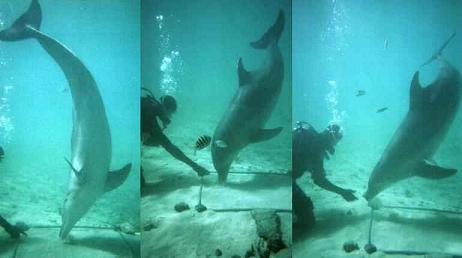Target detection in coral sand by Bottlenose dolphins

Aim: Investigate if bottlenose dolphins can be trained to detect targets buried in coral sand using their sonar, and if so, if they used any particular search strategy.
Background: In the waters of the Bahamas wild dolphins have been observed in a foraging strategy called “crater-feeding”. The dolphins detect and dig out fish buried in coral sand while echolocating. The use of echolocation in this behaviour is poorly understood, e.g. if the dolphins extract useful information from the sonar echoes from the buried fish or if they use other cues to detect the fish.
Bottlenose dolphins are able to detect targets buried 45cm into mud and dolphins have also been trained to detect buried mines for military use so it seems to be a potential skill of this species.
However, the detection possibility depends partly on the substrate, and except for the dolphins sonar, they also have good vision and hearing enabling prey detection. It is possible that crater-feeding dolphins detect breathing holes and/or faecal piles on the sand surface by vision and/or sonar. Or maybe they can detect sounds made by the fish. for example moving or chewing in the sand...
Responsible for this page:
Director of undergraduate studies Biology
Last updated:
05/31/07
